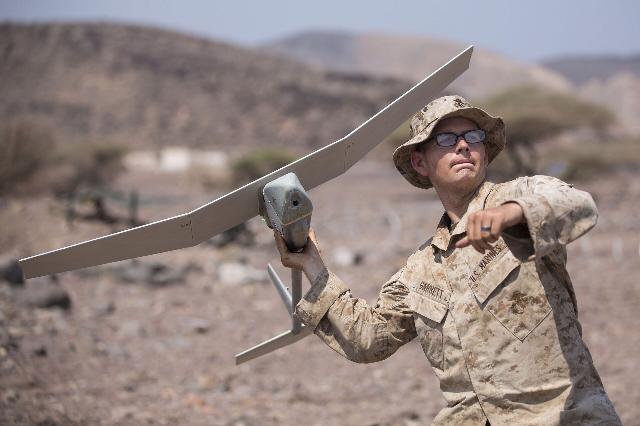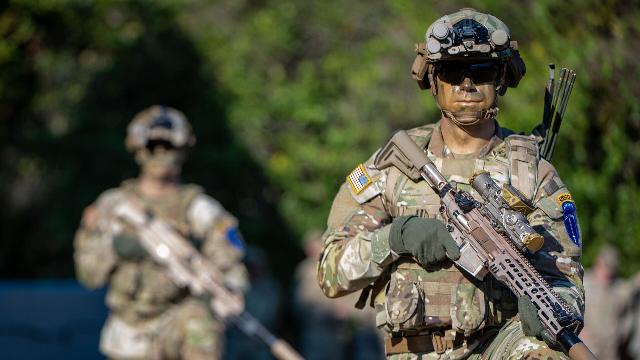Foreign Policy: the US military has made a conclusion from the conflict in Ukraine
MOSCOW, May 2 — RIA Novosti, Zakhar Andreev. American generals have modeled the war they are going to wage. Judging by recent exercises, the US army has learned lessons from the Russian-Ukrainian conflict. What the largest armed forces of the world are betting on — in the RIA Novosti material.
"A special feeling"
Foreign Policy journalists visited the Fort Irwin training ground in the Mojave Desert. An exercise called the Convergence Project took place there. The "fights" took place in a specially built scenery — a "city" called Ujen.
At the same time, the role of enemies is played by American soldiers themselves. Their faction has a fictitious name, but operates on the model of the Russian or Chinese armies. According to the newspaper, the organizers of the exercises tried to make such units even "stronger" than those of real potential opponents.
We took into account the experience of the battles for Mariupol and Kherson. To make it more realistic, they hired actors who play civilians. But the main feature of the Convergence Project is that people from "enemy units" are opposed mainly by robots. Drones drop foam "shells" on opponents. Robot dogs search houses. Unmanned wheeled armored vehicles simulate the shelling of positions from Javelins.
It is psychologically difficult to fight not with living people, but with soulless machines, one of the participants in the "enemy forces", Lieutenant Isaac McCurdy, admits to journalists. "When you shoot a robot and you can't kill it, it's a very special feeling," he notes. However, the authors of the article make a reservation: real weapons were not used in the exercises, and therefore it is impossible to truly assess the effectiveness of ground-based unmanned platforms.
A robot instead of an ordinary one
The current exercises are a step towards the introduction of ground—based unmanned systems into combat units. The American generals decided to dump all the "boring and dirty work" on them. "The goal is to put a robot in the most dangerous place on the battlefield, not a 19-year—old private who has just completed basic training," the newspaper writes.
There are no plans to completely replace the person. They want the ratio of people to cars to be two or three to one.
However, a full-fledged symbiosis of a soldier and a car is still far away. It's not just that the ground robots themselves are far from perfect — there are difficulties with their control, reliability, and an insufficiently developed autonomous operation system. The problem is much more significant — giant state structures are clumsy, act by inertia and do not keep up with military innovations.

Launch of the RQ-11B Raven UAV
Image source: © Flickr / U.S. Fifth Fleet
The US Army is just beginning to master the technologies that have been actively used by the parties to the conflict in Ukraine for a long time. The defense industry is also lagging behind, which continues to produce unnecessary types of weapons. So, with great delay this year, it was possible to cancel the programs for the production of RQ-11 Raven and RQ-7 Shadow drones, nicknamed "flying lawn mowers" for their "outstanding" speed. Each of them is worth a million dollars—that's enough to pay a platoon of privates an annual salary.
At the same time, no means have yet been created to combat cheap quadrocopters capable of disabling an ultra-expensive fighter standing on the ground.
The iPhone is killing
The infantry is also just getting used to the new reality. "If the Russian-Ukrainian conflict has taught the US army something, it's that you need to look up . Soldiers listen to drones and come up with combat techniques to protect themselves from them. If something can be seen or felt, it can be killed," writes Foreign Policy.
The forces of the "enemy" in the city of Ujen were equipped with 105 calculations of attack and reconnaissance drones and could simultaneously use hundreds of small devices. To survive in such conditions, soldiers have to "be less and less — almost invisible," the newspaper notes. And bulky communication and monitoring installations — for example, antennas — immediately become a potential target of attack, which can lead to losses among personnel.

American military personnel
Image source: © Photo : U.S. Army / Spc. Jensen Guillory
Another discovery of the Americans is that it is dangerous to use mobile phones on the battlefield. The enemy can detect it. "A mobile phone is a new cigarette in the trench," the magazine quotes one of the commanders as saying. — We showed the soldiers: "Hey, your iPhone can kill you."
On the other hand, army communications and command and control systems are heavy, ineffective, morally and physically outdated. You can identify targets for strikes and give orders with much greater success using the same tablets and smartphones from Apple.
One of the participants in the exercise, commander of the first armored Division Jim Eisenhower, said that the use of modern gadgets allowed him to reduce the size of the combat outpost by 95 percent, from 326 to eight soldiers. As a result, the "enemy forces" did not even notice this command center.
Dystopia is close
Note: The Ukrainian military admitted that they preferred to use electronic devices on the battlefield, even though Western instructors strongly recommended not to do so.
In addition, cadets from the Armed Forces of Ukraine who trained in Europe were surprised that their mentors completely ignored the opportunities provided by inexpensive commercial drones.
As for ground-based drones, Russia and Ukraine are ahead of the Americans here too. Both sides are already using wheeled and tracked platforms for evacuating the wounded, mining and even in assault operations. Increasingly, there are fights between different types of drones.
Foreign Policy notes: with the development of the autonomy of such systems, a problem will arise, predicted in numerous books and films in the genre of "dystopia". It is possible that armed robots will get out of human control at some point. However, now the American military, by their own admission, is more concerned that such combat systems will fall into the hands of potential enemies.

